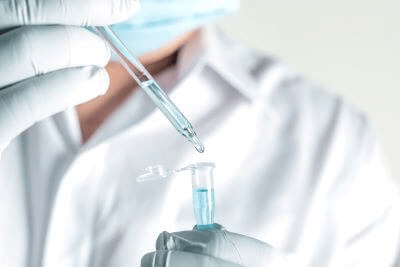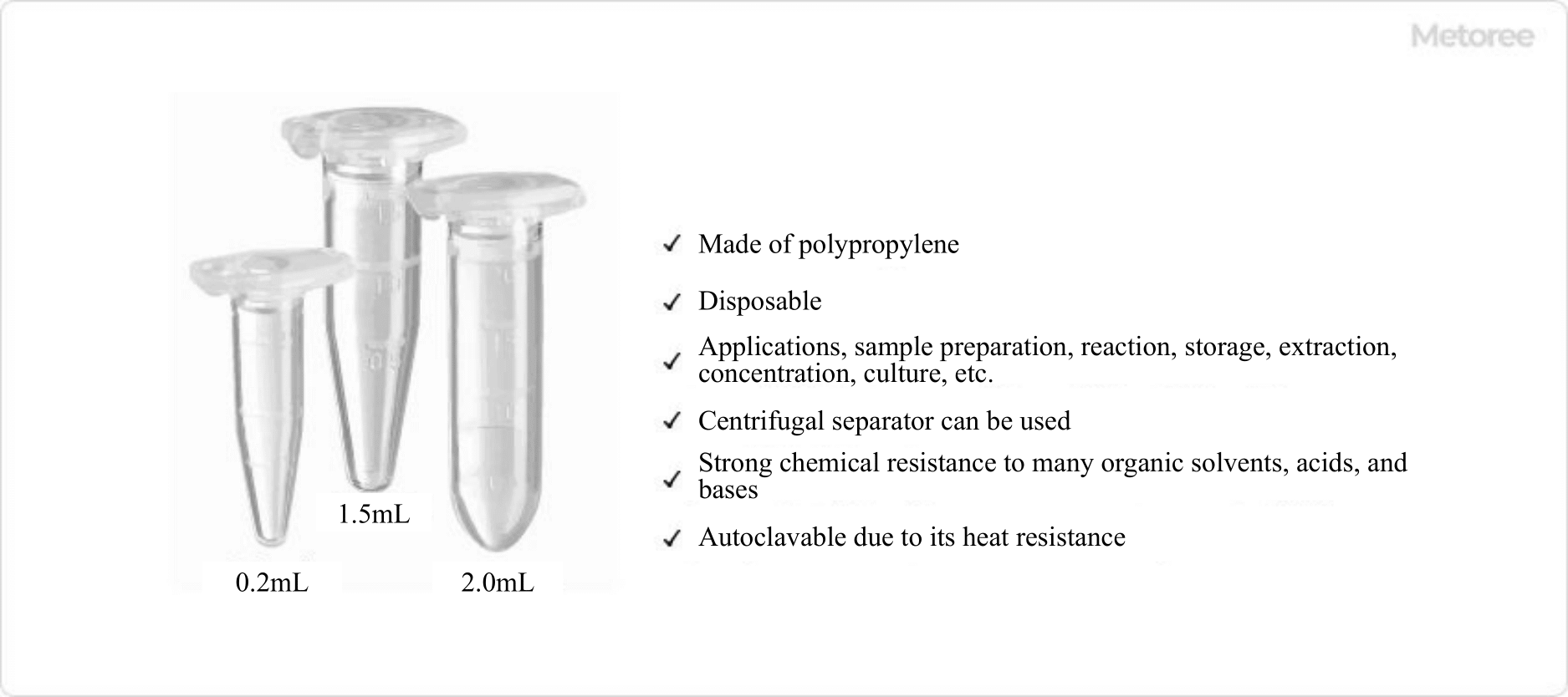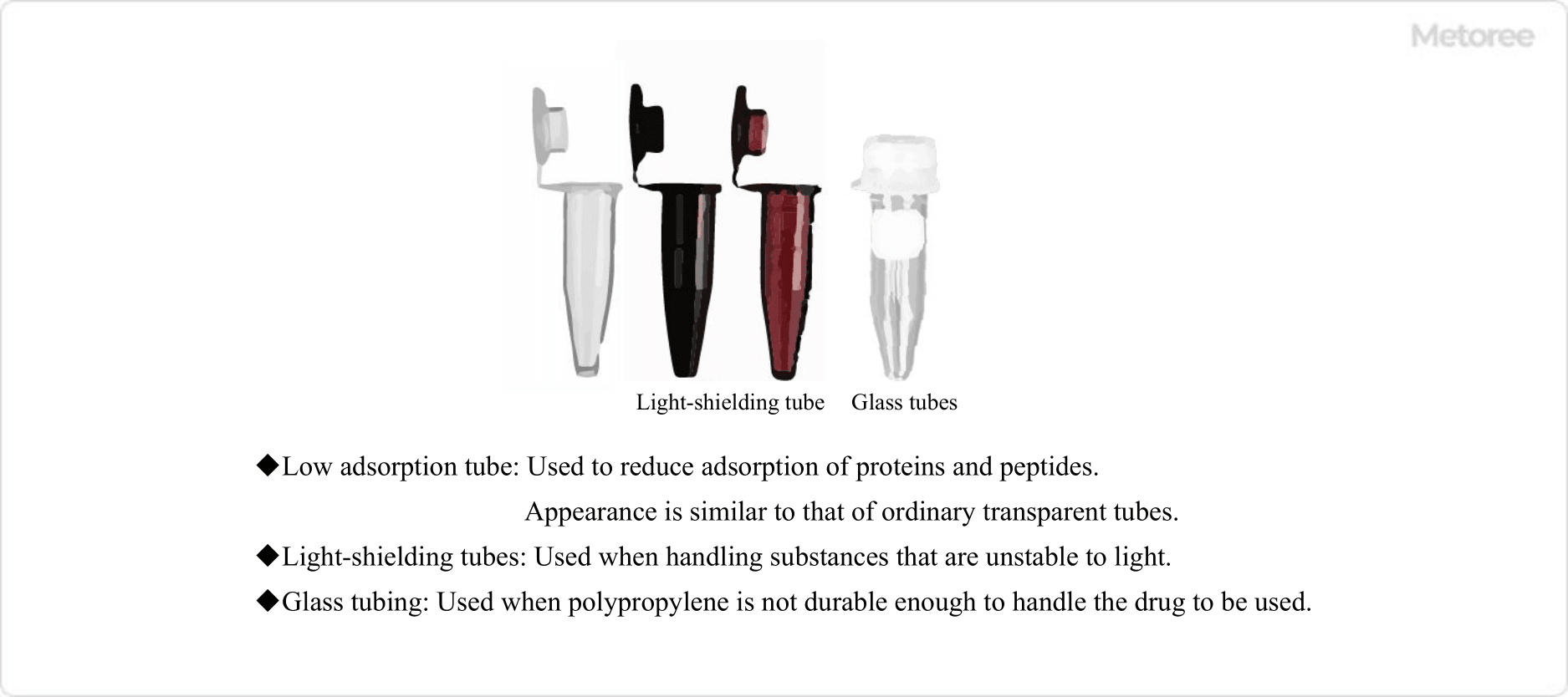What Is a Microtube?

A microtube is a small polypropylene test tube in microliter to milliliter sizes used in biochemistry and molecular biology. They are also called microcentrifuge tubes because they are often used in microcentrifuges.
Since contamination of foreign matter greatly affects the results of experiments conducted in microliter units, these tubes are disposable consumables.
There are various capacities such as 0.2ml, 1.5ml, 2.0ml, etc. The locking lid is connected to the body. The locking lid is connected to the body for excellent sealing.
Uses of Microtubes

Figure 1. Overview of microtubes
Microtubes are used for sample preparation, reaction, storage, extraction, concentration, and culture. They are available in a variety of materials and shapes depending on the application.
For example, heat control is important in PCR tests that handle genes, and it is also necessary to use tubes that are free from contamination by DNase, RNase, or nucleic acids. For this reason, PCR tests use special microtubes with relatively thin, uniform walls, excellent thermal conductivity, and guaranteed cleanliness.
For other analyses involving proteins and peptides, a type of microtube that reduces adsorption on the inner wall (low-adsorption tube) is used.
Structure of Microtubes
Microtubes are generally made of polypropylene. Polypropylene has high heat resistance among thermoplastic resins and can be used for autoclaving.
Polypropylene microtubes also have excellent chemical resistance and are resistant to acids and alkalis such as sulfuric acid and calcium hydroxide, as well as many organic solvents. However, there are some chemicals, such as chloroform and highly concentrated acids, that cannot be used, so be sure to check the product information.
When using solvents that cannot be used with polypropylene, glass microtubes should be used. Glass microtubes are more resistant to chemicals than polypropylene microtubes. They are also highly transparent, making them suitable for use when observation of the contents is required.
Other low-adsorption type microtubes have a variety of low-adsorption treatment methods, such as silicone coating and MPC polymer coating, and you need to select the right product for your purpose.
How to Select Microtubes

Figure 2. Special microtubes
First, select the tube size according to the sample/solvent volume to be handled. Next, make sure that none of the solvents or chemicals used will dissolve or react with the polypropylene tubing material. If polypropylene tubing cannot be used, glass microtubes should be selected.
Microtubes are generally clear and colorless, but fully light-shielded or translucent partially light-shielded tubes are also available. If the sample or chemical is sensitive to light stimulation, choose light-shielding tubes.
When proteins, peptides, etc. are used, low-adsorption tubes should be selected according to the nature of the experiment and the characteristics of the sample. Since there are different types of low-adsorption processing methods, it is important to select the appropriate product for the experimental system.

Figure 3. List of chemical resistance of polypropylene microtubes
For example, the silicone coating is a water-repellent finish that is suitable for highly viscous blood and nucleic acids. The coating may peel off when organic solvents are used.
On the other hand, MPC polymer coating is a hydrophilic process and is suitable for hydrophobic samples such as proteins. It is resistant to organic solvents such as acetonitrile and DMSO, but not to strong acids and alkalis.
Low adsorption tubes are also available, in which surface adsorption is suppressed by blending a proprietary protein/peptide low adsorption resin material, rather than by polypropylene surface treatment.